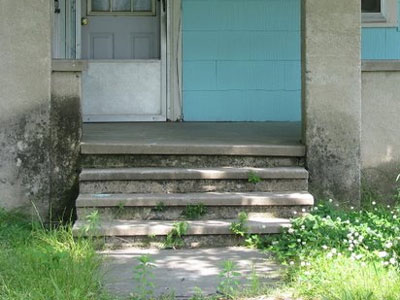Mold Growing On Cement Wall

Mold growing on the cement wall or
stucco isn't uncommon. Don't forget that mold usually grows in moist
areas. If there is water, a little shade and a porous material like wood
or stucco, you've got excellent conditions for growing mold.
If you're in the construction business, home buying or selling business
or just a homeowner, I would like you to pay attention to what I'm about
to say, "Mold Loves Moisture." Whenever you see mold growing on your
wall, start looking around for moisture. Where could the moisture have
come from or is there still a moisture problem.
If you look at the picture, the mold is in a well shaded area, on a
porous material but nothing looks wet. Where's the moisture? You need to
start looking around for any evidence that could help you, when solving
this problem.
My first guess would be, the lawn sprinklers. You can turn the
sprinklers on to see if they're spraying onto the stucco. If they are,
they need to be fixed as soon as possible. Sprinklers shouldn't be
spraying your house, any part of your house. If you're sprinklers are
spraying parts of your house, located in the shade, in a humid climate,
there is a good chance that you could be the new recipient of mold on
your cement walls, like this.
Now there could be other reasons for the mold. The raised cement patio,
looks clean but it's dry. Is someone spraying the cement patio off on a
regular basis with water? This could be a problem also. If this is the
problem, simply buy the person a broom and explain the situation to
them.
Home Repair Tip: If the sprinklers are spraying the home, I would
recommend putting a planter about 3 feet wide around these areas and
then using a drip system to water the plants or fill the planter up with
decorative rock. It's going to be cheaper to install a planter and move
the sprinklers, than to remove the damaged stucco, wood framing and
possibly part of the concrete foundation.
